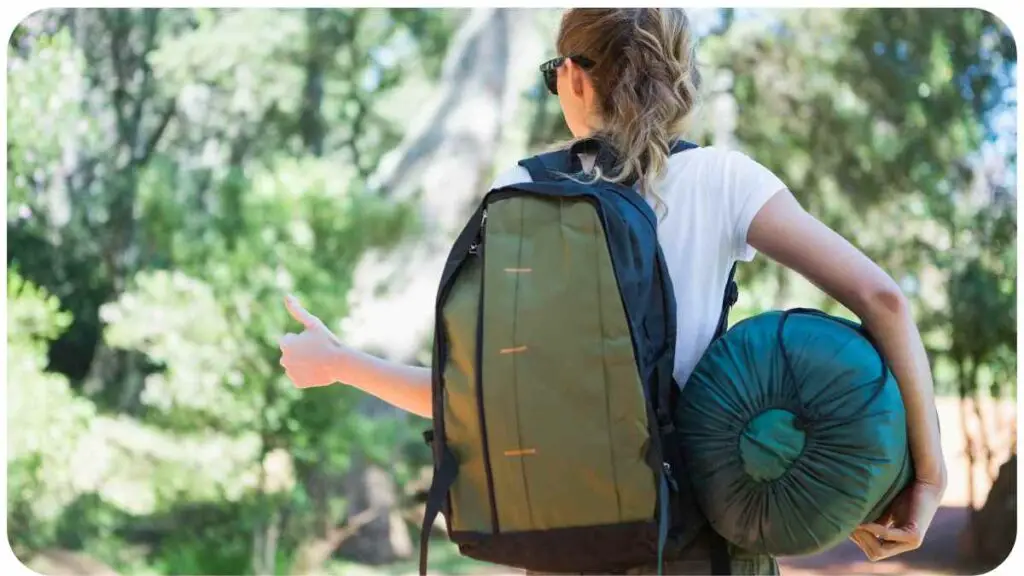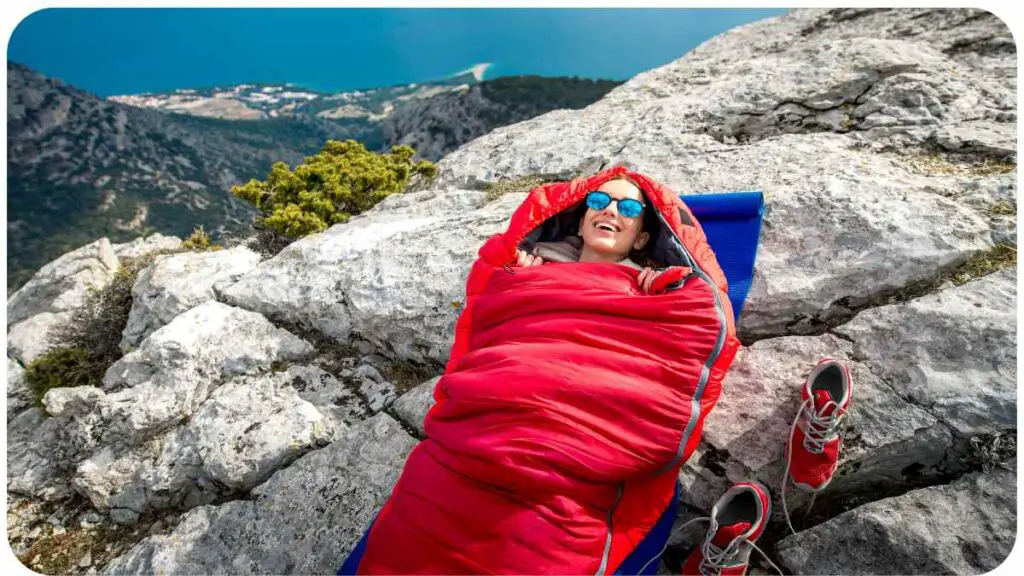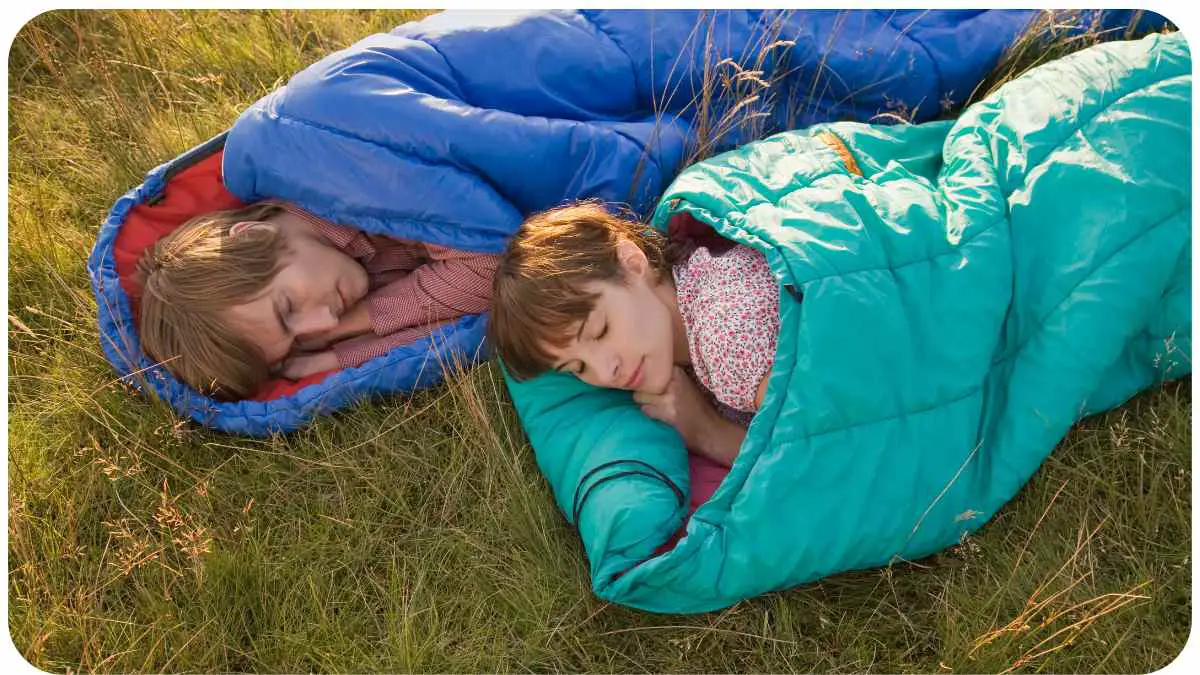C: Let’s dive into the world of sleeping bags. When you’re out in the great outdoors, there’s nothing like a cozy, warm sleeping bag to make your night under the stars enjoyable. However, if you’ve found that your REI sleeping bag isn’t keeping you as warm as you’d like, don’t worry – we’ve got you covered. In this article, we’ll explore the factors that affect the warmth of your sleeping bag and provide tips to ensure you stay toasty even on chilly nights.
| Takeaway |
|---|
| Properly understanding your sleeping bag and its components, such as temperature ratings and insulation, is key to staying warm and comfortable during your outdoor adventures. |
| Regular maintenance and care of your sleeping bag will help ensure it continues to provide the warmth you need for many trips to come. |
| Exploring additional tips and accessories, such as liners, pads, and appropriate clothing, can significantly enhance your sleeping bag’s warmth and your overall camping experience. |
| Don’t hesitate to upgrade your sleeping bag when it no longer meets your warmth needs, as newer options often offer improved insulation and features. |
| With the right knowledge and preparation, you can enjoy the great outdoors year-round while staying cozy in your REI sleeping bag. |
The Importance of a Warm Sleeping Bag

A warm sleeping bag is not just a comfort; it’s a necessity for a good night’s sleep when camping, hiking, or backpacking in colder environments. Whether you’re in the backcountry or at a campsite, your sleeping bag is your primary defense against the cold.
When setting out for a hiking trip, it’s essential to ensure comfort. Understanding and properly adjusting your North Face backpack straps can significantly enhance your journey. Don’t compromise on comfort when the solution is just an adjustment away.
Understanding Temperature Ratings
Let’s take a closer look at temperature ratings to understand what they mean and how they impact your choice of a sleeping bag.
| Temperature Rating | Suitable Conditions |
| 35°F and higher | Summer camping |
| 15°F to 35°F | 3-season camping |
| 15°F and lower | Winter camping |
Understanding the temperature rating of your sleeping bag is crucial. If your sleeping bag’s rating doesn’t match the expected conditions, you might find yourself shivering through the night.
The Insulation Factor
The primary factor that determines how warm a sleeping bag is, is its insulation. Insulation traps heat and keeps you warm by preventing the cold air from getting in and the warm air from escaping.
Camping can be an exhilarating experience, but minor inconveniences like tent issues can hamper the mood. If you’ve ever faced problems with your tent zipper, this guide on how to fix Coleman Tent Zipper Issues will be a lifesaver. Always be prepared for the outdoors.
Types of Sleeping Bag Insulation
Let’s take a deeper dive into the two main types of insulation used in sleeping bags – synthetic and down insulation.
Synthetic Insulation
| Pros | Cons |
| Affordable | Bulkier and heavier |
| Dries quickly when wet | Less compressible |
| Maintains insulation when wet | Not as durable as down insulation |
Down Insulation
| Pros | Cons |
| Lightweight and compressible | Expensive |
| Excellent warmth-to-weight | Loses insulation when wet |
| Durable | Longer drying time |
The choice between synthetic and down insulation depends on your preferences, budget, and the expected weather conditions. Both types have their pros and cons.
Shape and Size Matters
The shape and size of your sleeping bag can significantly affect its warmth. A snug-fitting mummy bag conserves heat better than a roomy rectangular bag. It minimizes the amount of air your body has to heat inside the bag.
Embarking on a camping adventure soon? To avoid common pitfalls and ensure a smooth experience, delve into the ultimate guide to avoiding camping fails. Knowledge is the key to ensuring memorable outdoor moments.
Features to Look for in a Sleeping Bag

To enhance the warmth and comfort of your sleeping bag, consider these key features:
Hood
A hood is crucial for retaining heat. It keeps your head warm and shields it from cold drafts.
Draft Collar
A draft collar prevents warm air from escaping and cold air from entering. It’s especially useful in sub-zero conditions.
Draft Tubes
Draft tubes run along the zipper and keep cold air from seeping in through the zipper teeth.
Zipper Quality
High-quality zippers prevent snags and keep the bag securely closed.
Capturing memories outdoors can be thrilling. But when equipment malfunctions, it can be frustrating. If your camera is giving you trouble, here’s a handy guide on how to fix a freezing GoPro. Never miss capturing a precious moment again.
Layering for Extra Warmth
Layering is not just for clothing; it can also be applied to your sleeping system. Adding a liner or wearing extra clothing inside your sleeping bag can provide extra insulation on extremely cold nights.
Proper Sleeping Bag Care
To maintain the warmth of your sleeping bag, it’s essential to care for it properly. Regularly clean and store it as per the manufacturer’s instructions to ensure it stays in good condition.
Real-World Testing
Here’s a personal experience from the author’s adventures with REI sleeping bags:
Author’s Note: My Experience with REI Sleeping Bags
Having spent countless nights in the great outdoors, I can attest to the quality and warmth of REI sleeping bags. During a particularly frigid trip in the Rockies, my REI sleeping bag kept me snug and cozy in sub-zero temperatures.
When It’s Time to Upgrade
If your sleeping bag is no longer providing the warmth it once did, it might be time for an upgrade. Technological advancements and improvements in insulation materials make newer bags more efficient.
Traveling with hiking gear can sometimes be confusing, especially with airline regulations. Before your next flight, make sure to check if hiking backpacks are allowed as carry-on. Travel with clarity and confidence.
Alternative Ways to Stay Warm
Sometimes, staying warm in your sleeping bag isn’t enough. Here are some additional tips to ensure a comfortable night’s sleep:
- Use a good quality sleeping pad to insulate yourself from the cold ground.
- Keep your sleeping bag clean; dirt and moisture can reduce its insulating capabilities.
- Wear a hat to preserve body heat.
- Use a hot water bottle or hand warmers inside your sleeping bag.
Troubleshooting Cold Nights
If you find yourself shivering in your sleeping bag, here are some quick fixes:
- Adjust your clothing layers.
- Check for drafts and ensure the bag is properly zipped up.
- Add extra insulation with blankets or a liner.
- Place your sleeping bag on a well-insulated pad.
Conclusion
In conclusion, the warmth of your REI sleeping bag is influenced by several factors, including temperature rating, insulation, size, and features. By understanding these elements and taking the necessary precautions, you can ensure a cozy and comfortable night’s sleep, no matter how chilly it gets.
Don’t let a cold night in the wilderness dampen your outdoor adventures; take the time to evaluate your sleeping bag and make adjustments as needed. With the right knowledge and preparation, you’ll be well-equipped to enjoy the great outdoors in all seasons. So, go ahead, plan your next adventure, and rest assured that your REI sleeping bag will keep you warm and comfortable.
Further Reading
Here are some additional resources to further enhance your knowledge about sleeping bags and staying warm in the outdoors:
Understanding Sleeping Bag Temperature Ratings: This comprehensive guide from REI delves deep into the intricacies of sleeping bag temperature ratings. Learn how to choose the right bag for your adventures in various conditions.
Sleeping Bag Essentials: REI’s guide to sleeping bag essentials covers everything from choosing the right type of sleeping bag to care and maintenance tips. It’s a valuable resource for both beginners and experienced campers.
How to Stay Warm in a Sleeping Bag: REI’s blog post offers practical tips and tricks to ensure you stay warm in your sleeping bag. From clothing choices to smart camping practices, this article has you covered.
FAQs
How do sleeping bag temperature ratings work?
Sleeping bag temperature ratings indicate the lowest temperature at which a bag is designed to keep you warm. Understanding these ratings is crucial for choosing the right bag for your outdoor adventures.
Synthetic or down insulation – which is better for staying warm?
The choice between synthetic and down insulation depends on various factors. Learn about the pros and cons of each to make an informed decision.
What can I do if my sleeping bag isn’t warm enough?
If you find your sleeping bag isn’t providing enough warmth, there are several troubleshooting steps you can take. We’ll walk you through solutions to ensure a cozy night’s sleep.
Are there any additional accessories that can enhance sleeping bag warmth?
Discover accessories like liners, pads, and clothing that can complement your sleeping bag and boost its insulation capabilities.
How should I store my sleeping bag to maintain its warmth?
Proper storage is essential to preserve your sleeping bag’s warmth over time. Learn the best practices for storing your sleeping bag when not in use.

Hellen James is an outdoor enthusiast, writer, and hiker. She loves to explore the world around her by immersing herself in nature and visiting new places.


